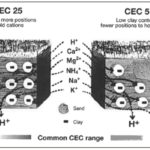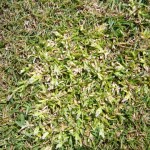
You will often see CEC mentioned in passing on a soil analysis report, but what does this mean?
Cation Exchange Capacity (CEC) describes the mechanism by which the main plant nutrient ions are held in the soil. Low CEC can cause nutritional problems for our turfgrass plants and is usually an indicator of very high sand content, low pH or both.


Unlike many traditional fertilisers, Hume Pro is designed for rapid breakdown and easy assimilation, ensuring nutrients get to where they’re needed—fast. It’s especially rich in Leonardite-based humic substances, giving you a powerful combination of humic and fulvic acids that improve root zone chemistry and biological activity.

Transitioning your green from Poa annua to bent/fescue is not only critical to achieving a Performance Bowling Green, but is actually a realistic goal. The spongy, soft turf associated with annual meadow grass is less than ideal for bowls. Common wisdom says that this can't be done without major disruption and that even after it is achieved it wont last. This article explains in detail how to undertake the transition of your green from Poa annua to bent/fescue turf and dispels the myths about stressing Poa. This is the way to change your green permanently and without fuss. It will also save your club money on maintenance, so what's not to like?